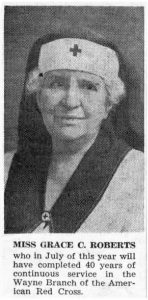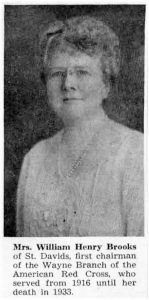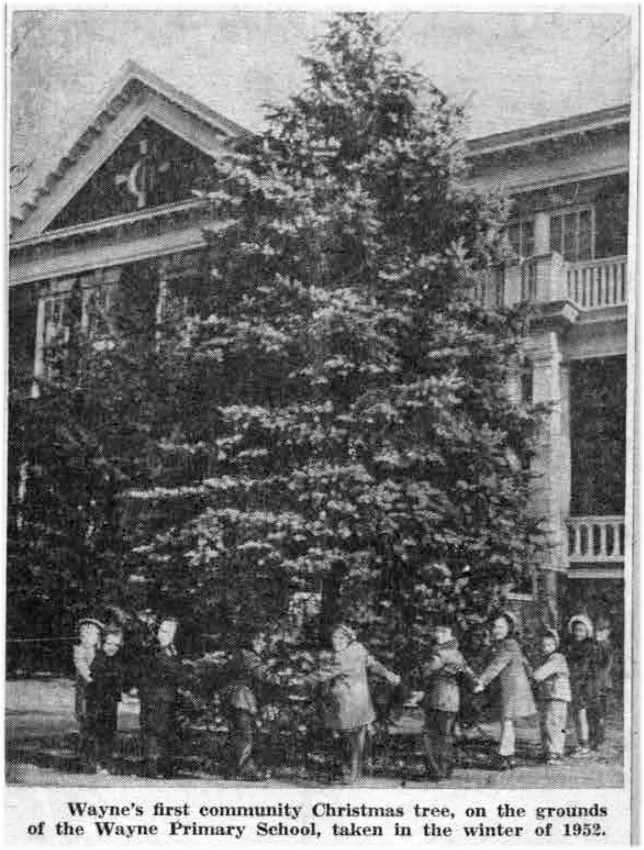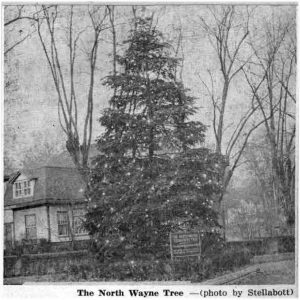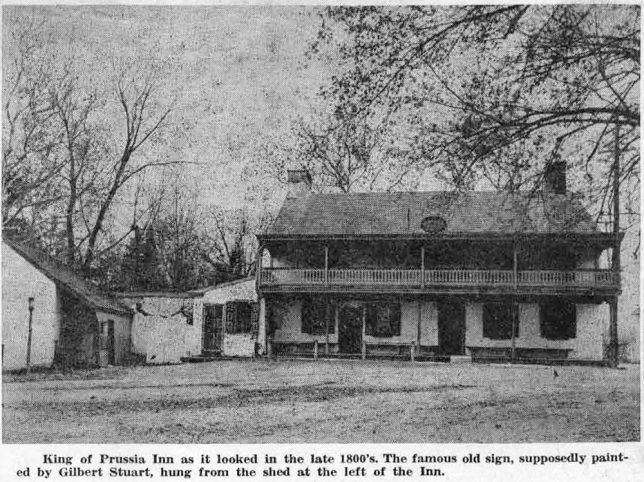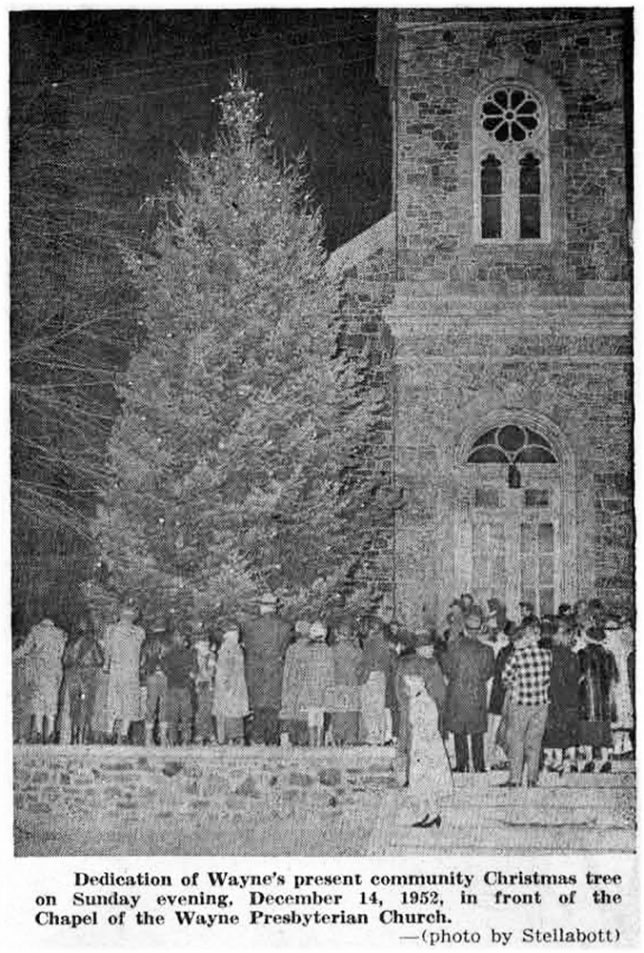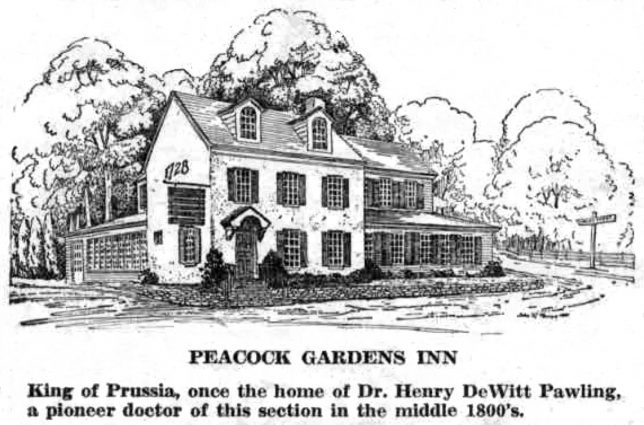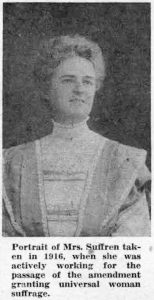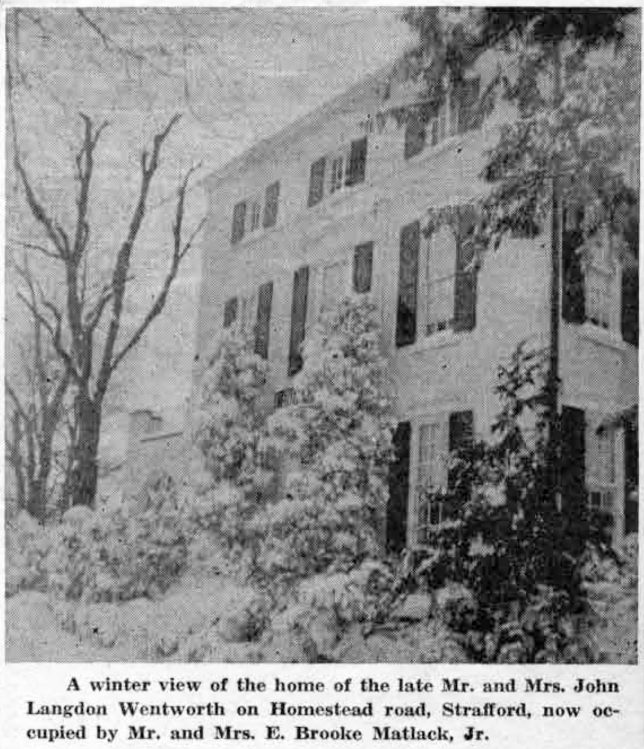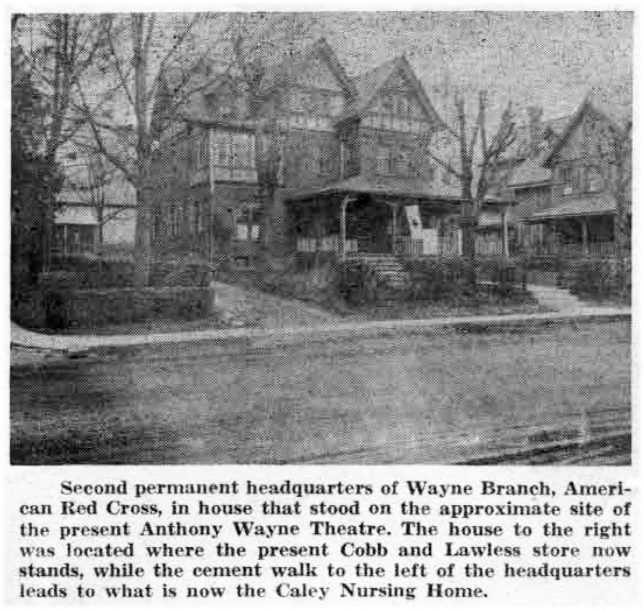 In addition to the two Red Cross citations awarded Miss Grace Roberts, as described in last week’s column, there is still another one, given in February, 1945. On this occasion, Miss Roberts was a special guest of honor, at a luncheon given at the Philadelphia Headquarters of the Southeastern Chapter, American Red Cross, to mark the 28th anniversary of the opening of the production workrooms in the Chapter. Since Miss Roberts had been in the Production Corps of Red Cross since 1917, it also marked a 28th anniversary for her.
In addition to the two Red Cross citations awarded Miss Grace Roberts, as described in last week’s column, there is still another one, given in February, 1945. On this occasion, Miss Roberts was a special guest of honor, at a luncheon given at the Philadelphia Headquarters of the Southeastern Chapter, American Red Cross, to mark the 28th anniversary of the opening of the production workrooms in the Chapter. Since Miss Roberts had been in the Production Corps of Red Cross since 1917, it also marked a 28th anniversary for her.
The citation was signed by Dr. George P. Rea, then chapter chairman, and by Mrs. Thomas Potter, chapter secretary, who had organized the production corps in 1917. It was presented to Miss Roberts “in recognition of 28 years of unremitting service in the Production Corps of the Southeastern Chapter.”
Even before that eventful date of April 6, 1917, when the United States entered World War I, Miss Roberts was active in community service work.
In 1915 she was chairman of the Neighborhood League’s Harvest Home Fete, given on the Charles S. Walton estate in St. Davids, which cleared over $4,000 for the local relief work of that organization. Later, the Wayne Needlework Guild gave her charge of packing boxes for the needy of Europe.
A clipping from a June, 1915, issue of “The Suburban,” preserved among Miss Roberts’ mementos, shows that a total of 4,975 articles had been shipped to Europe over a period of the previous four months. Made by the willing hands of many workers in Wayne, this list comprised such articles as fracture pillows, rolled bandages, slings and knitted sponges and abdominal bandages, crutch pads, surgical shirts and many other articles to be used in army hospitals abroad.
This work for Europe’s hospitalized in the first World War was but a prelude to what was done when the United States had entered the conflict in April, 1917.
Among Miss Roberts’ most vivid memories are those of the first headquarters, established in the summer of 1916, in a ground floor apartment of what had once been the Pinkerton family home, on the southeast corner of Lancaster and Louella avenues. With volunteers in charge, these rooms were open every morning and afternoon for the enrollment of Red Cross members, and public meetings were held monthly. Among the volunteers in charge were Mrs. Henry Smaltz, Mrs. T.T. Watson, Miss Marion Mulford, Mrs. Robert G. Wilson, Mrs. William V. Alexander, Mrs. Wm. Henry Brooks and Miss Roberts.
In addition to rolling bandages, which was the first class to be started by the new branch, instruction in first aid was offered.
Within two months these first headquarters were outgrown. Larger quarters were obtained on the floor of the house at 105 East Lancaster avenue, then occupied as both office and residence by Dr. A.H. O’Neal. This house had been known for many years as the home of Mr. and Mrs. John H. Cook, old time residents of Wayne. Soon still larger quarters were needed and in January, 1918, the branch moved to the Bonniwell house at 120 West Lancaster avenue.
(To be continued)

